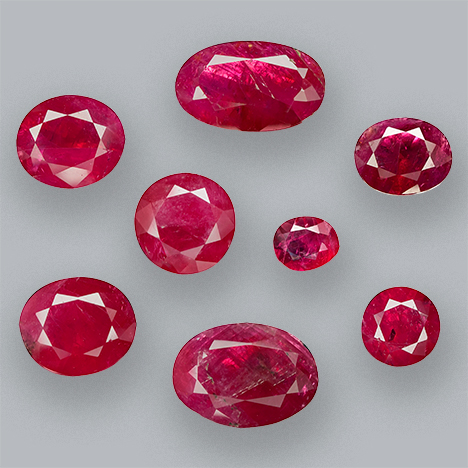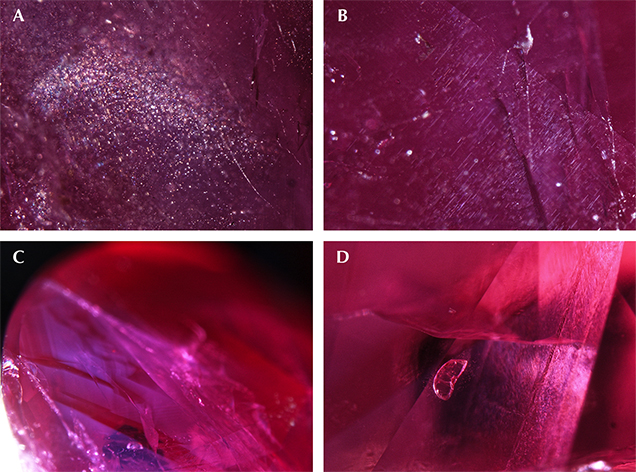Preliminary Study on Rubies Reportedly from Pokot, Kenya

In July 2016, Christine Muthama and David Pkosing from Pokot Gems Ltd. in Nairobi submitted eight faceted rubies (figure 1) to GIA’s Bangkok laboratory. The material came from a new operation in the Pokot area, a marble-type deposit in western Kenya that has been largely inactive since the 1960s. This new production could prove to be an interesting source of cabochon- and facet-grade rubies from East Africa.
The submitted rubies ranged from 0.36 to 4.38 ct and were semitransparent to translucent, with a very fine, milky appearance. Their gemological properties were consistent with ruby from marble-type deposits. The samples displayed strong red fluorescence under long-wave UV radiation and a medium red reaction under short-wave UV. They contained unhealed fractures, planes of negative crystals, fingerprints, and different mineral inclusions such as apatite, calcite, orange and black rutile, chlorite, pyrite, zircon, and amphibole (figure 2), the last of which is uncommon in marble-hosted rubies. Short needles, boehmite, and clouds of reflective particles were also observed.

Since the samples had inclusion features similar to those seen in marble-hosted rubies from Myanmar or Luc Yen, Vietnam, this interesting new Kenyan material could present a challenge in future origin determination studies. Nevertheless, spectroscopy and chemical composition analysis can be used to separate rubies from these deposits. FTIR spectroscopy of all eight samples from Pokot showed the presence of boehmite. LA-ICP-MS analysis revealed a distinguishing trace element composition. The rubies from Pokot had low Fe content (60–252 ppma), along with the following trace element contents: V: 6–11 ppma; Ga: 5–10 ppma; Ti: 29–135 ppma; and Cr: 678–1773 ppma. This combination is quite different from that of known Vietnamese rubies, showing once again that trace element composition is a useful tool for determining the origin of rubies.



